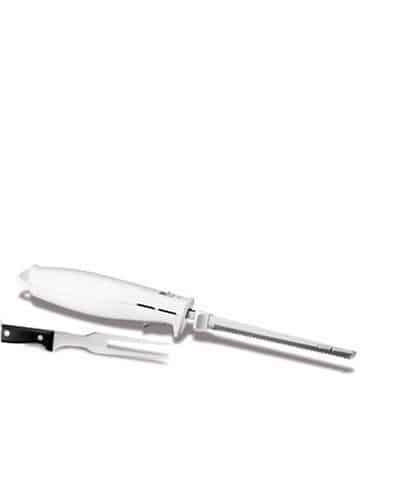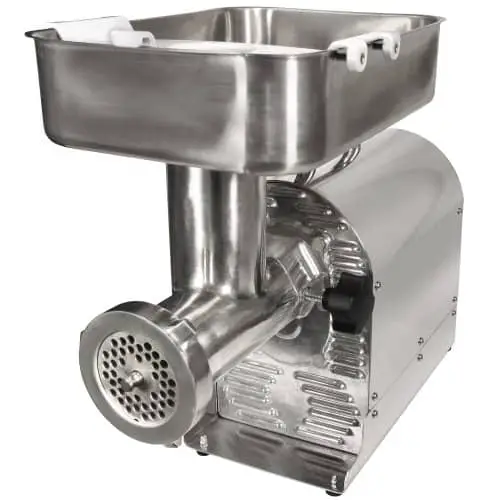As an Amazon Associate I earn from qualifying purchases.

Would you love to have an electric knife to help you with all of your carving needs? Do you want something that is dependable, but still highly affordable? That’s what you’ll receive with this electric knife that is produced by Hamilton Beach. It offers stainless steel blades and a 100 watt motor that will help you cut through most items. They blades offer a 7.5 inch cutting surface and the entire set is really easy to clean – just use soapy warm water. You can pick this kitchen appliance up at Amazon right now for about $20.
What Are the Features of This Electric Knife?
Interestingly enough, the primary feature of this kitchen appliance isn’t actually part of the appliance at all. This is a set, which means you’re also receiving a carving fork with the purchase of this item. It’s a fork with a reduced handle, making your carving chores even easier. Just draw your electric knife in a straight line with the carving fork stabilizing the food product and you’ll quickly produce clean, consistent slices of turkey, bread, or even cheese.
There’s also these additional features to consider with this kitchen appliance:
- it offers a non-slip trigger so you won’t have to constantly stop and start your slicing in the middle of carving so you get a cleaner, easier usage experience;
- this carving set comes with a case that makes storing it a lot better than just tossing the entire appliance into a drawer; and
- the power cord that works on standard outlets is long enough to make sure you can carve safely without hitting the cord as you twist and turn with the carving process.
Are you going to get a lot of premium features on an electric knife at this price point? No. Will you get a dependable electric knife that will help make fast work of virtually any slicing chore? Thanks to the dual serrated blades, you will get that opportunity!
Is There an Advantage To Using This Carving Set?
The primary advantage that you’ll receive with this electric knife is the size of the slice that you’ll be able to make. The blades are about ½ inch longer than other kitchen appliances at this price point, which means you can access a larger carving surface with ease. It also means you can put a freshly baked loaf of bread into a bread slicer and use this electric knife to quickly slice uniform pieces of bread.
The design of this electric knife could be a little better. It tends to overheat with constant use, so you have to be mindful of prolonged use so you don’t burn out the motor. There’s no real safety mechanism on this appliance either beyond letting go of the trigger. The trigger doesn’t lock either, which means it must be depressed through the entire slicing process.
At this price point, you’re going to get a lot of value out of this electric knife. It has the capability to slice through even dense foods with ease, which means it can help you out with your kitchen chores today! If you’ve been looking for a budget-friendly electric knife, this might just be the best one to get.














